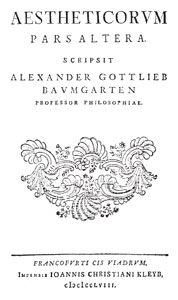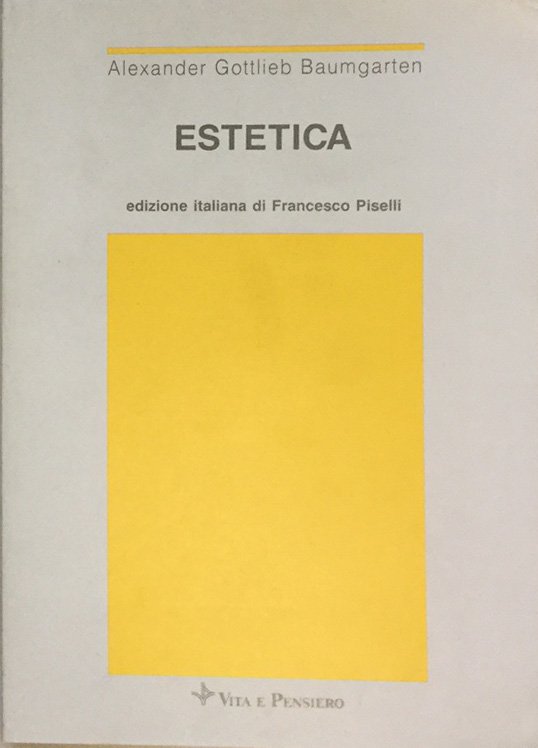

” as the “science of sensory cognition ”, aesthetics, for Baumgarten, can guarantee its coherence and unity by defining the goal of sensory cognition as such.

After conceding the point, Baumgarten immediately responds: “But something is better than nothing. Here Peter Fenves quotes Baumgarten and his incipient struggles in finding a definition for such an exhaustive concept: “In 1750, when Alexander Baumgarten, (…) published the first volume of his massive, incomplete, an d rarely read treatise entitled Aesthetica, he anticipated the tone that much of the controversy would adopt: “The following objections can be raised against our science: 1) it is so widely conceived that it cannot be exhausted in a single book, a single lecture course”-and a fortiori a single issue of a scholarly journal. Baumgarten wanted to pin down the basis of a science of aesthetics by attempting a deduction of the rules or principles of artistic or natural beauty from individual “taste.”ĭue to its very subjective nature, aesthetics has been a controversial discipline ever since these first definitions were formulated. In his Metaphysics, § 451, Baumgarten defined taste, in its wider meaning, as the ability to judge according to the senses, instead of according to the intellect, based on feelings of pleasure or displeasure. The discipline in its modern form is primarily concerned with issues surrounding the creation, interpretation, and ultimate appreciation of works of art, and so it involves how the experience of such material is mediated through the individual sensitivity of the beholder, and the way the experience of it is shaped through presentation by cultural conventions such as the exhibition and review. Nowadays, aesthetics is universally perceived as the branch of philosophy that deals with art, defined in the Oxford English Dictionary as “taste, or of the perception of the beautiful”. The philosopher merely appropriated the word aesthetics, which had always meant sensation in ancient Greek, adding to its significance the meaning of “taste” or “sense” of beauty, the usage currently employed in modern times.

He called this epistêmê aisthetikê, or the science of what is sensed and imagined (Baumgarten, Meditationes, §CXVI, pp. He famously introduced the current definition of the philosophical discipline of aesthetics in his Halle master’s thesis when he was only twenty-one years of age.

On the 26 th of May 1762, German philosopher Alexander Gottlieb Baumgarten was born in Frankfurt (Oder), Brandenburg.


 0 kommentar(er)
0 kommentar(er)
